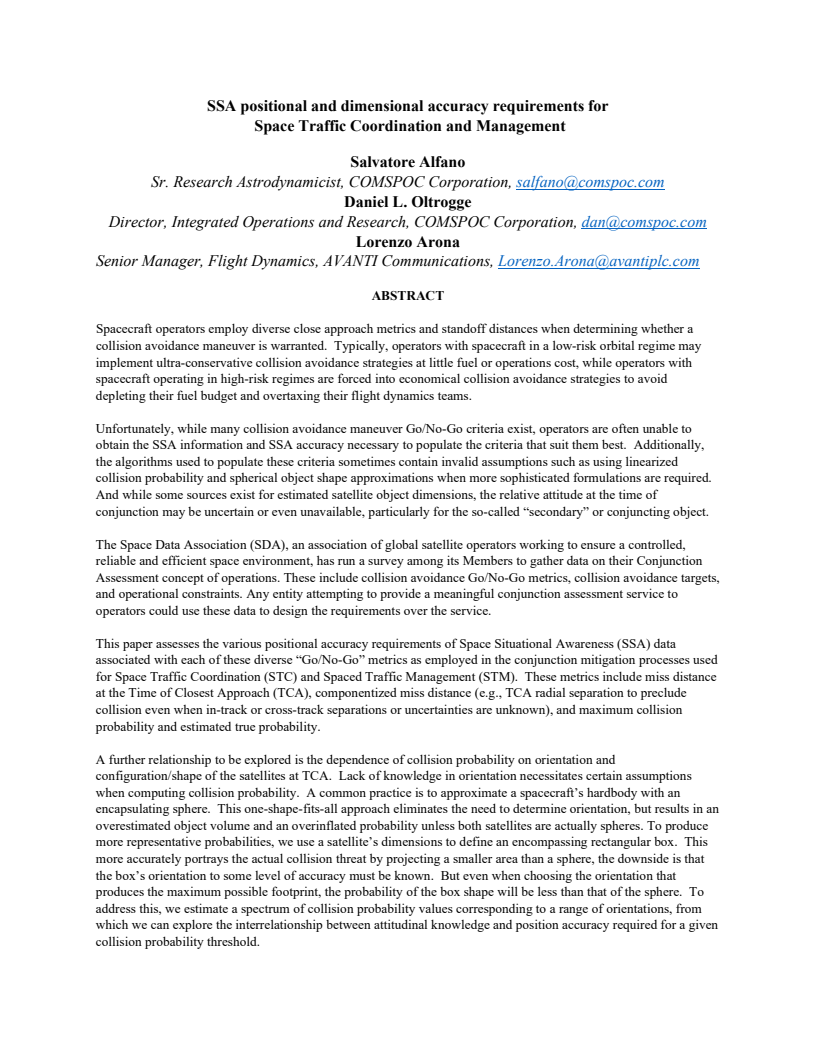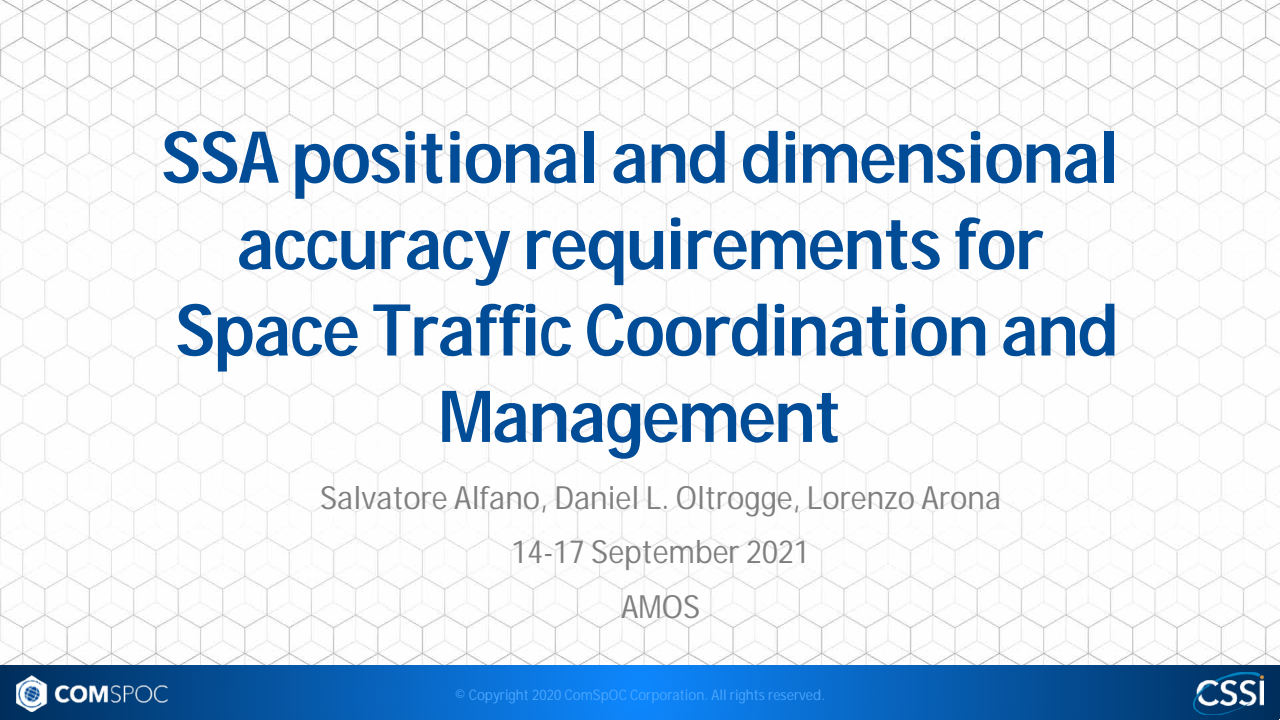SSA positional and dimensional accuracy requirements for Space Traffic Coordination and Management


Id: 226
Type: Conference paper
Published: 09/15/2021
Event: AMOS SSA Conference 2021
Authors:
Click an author to filter the list of related assets below.Abstract:
Spacecraft operators employ diverse close approach metrics and standoff distances when determining whether a collision avoidance maneuver is warranted. Typically, operators with spacecraft in a low-risk orbital regime may implement ultra-conservative collision avoidance strategies at little fuel or operations cost, while operators with spacecraft operating in high-risk regimes are forced into economical collision avoidance strategies to avoid depleting their fuel budget and overtaxing their flight dynamics teams. Unfortunately, while many collision avoidance maneuver Go/No-Go criteria exist, operators are often unable to obtain the SSA information and SSA accuracy necessary to populate the criteria that suit them best. Additionally, the algorithms used to populate these criteria sometimes contain invalid assumptions such as using linearized collision probability and spherical object shape approximations when more sophisticated formulations are required. And while some sources exist for estimated satellite object dimensions, the relative attitude at the time of conjunction may be uncertain or even unavailable, particularly for the so-called “secondary” or conjuncting object. The Space Data Association (SDA), an association of global satellite operators working to ensure a controlled, reliable and efficient space environment, has run a survey among its Members to gather data on their Conjunction Assessment concept of operations. These include collision avoidance Go/No-Go metrics, collision avoidance targets, and operational constraints. Any entity attempting to provide a meaningful conjunction assessment service to operators could use these data to design the requirements over the service. This paper assesses the various positional accuracy requirements of Space Situational Awareness (SSA) data associated with each of these diverse “Go/No-Go” metrics as employed in the conjunction mitigation processes used for Space Traffic Coordination (STC) and Spaced Traffic Management (STM). These metrics include miss distance at the Time of Closest Approach (TCA), componentized miss distance (e.g., TCA radial separation to preclude collision even when in-track or cross-track separations or uncertainties are unknown), and maximum collision probability and estimated true probability. A further relationship to be explored is the dependence of collision probability on orientation and configuration/shape of the satellites at TCA. Lack of knowledge in orientation necessitates certain assumptions when computing collision probability. A common practice is to approximate a spacecraft’s hardbody with an encapsulating sphere. This one-shape-fits-all approach eliminates the need to determine orientation, but results in an overestimated object volume and an overinflated probability unless both satellites are actually spheres. To produce more representative probabilities, we use a satellite’s dimensions to define an encompassing rectangular box. This more accurately portrays the actual collision threat by projecting a smaller area than a sphere, the downside is that the box’s orientation to some level of accuracy must be known. But even when choosing the orientation that produces the maximum possible footprint, the probability of the box shape will be less than that of the sphere. To address this, we estimate a spectrum of collision probability values corresponding to a range of orientations, from which we can explore the interrelationship between attitudinal knowledge and position accuracy required for a given collision probability threshold. We also explore the interrelationships between SSA positional accuracy, the operator-selected Go/No-Go metric and its threshold, timeliness, and resulting maneuver frequency. For example, the necessity to perform a collision avoidance maneuver adhere to a squared relationship on the adopted miss-distance threshold. The miss distance threshold adopted by the operator should, if done properly, be a function of the estimated accuracy of the primary and secondary objects as a function of time. We conclude this paper by comparing the accuracy requirements derived for each metric above with estimates of positional accuracy observed in actual SSA data fusion experiments conducted this past year. In many situations, the accuracy of legacy and commercial SSA systems is insufficient to support the adopted Go/No-Go metric without using comprehensive data fusion techniques.
Keywords:
Click a keyword to filter the list of related assets below.Citation:
Salvatore Alfano, Daniel L. Oltrogge, Lorenzo Arona, “SSA positional and dimensional accuracy requirements for Space Traffic Coordination and Management,” AMOS Conference 2021, Maui, accessible at https://comspoc.com/Resources/Content/Private/C-20220422T131448/Paper/SSA_Accuracy_Rqmts_FINAL.pdf.
Papers with related authors:


